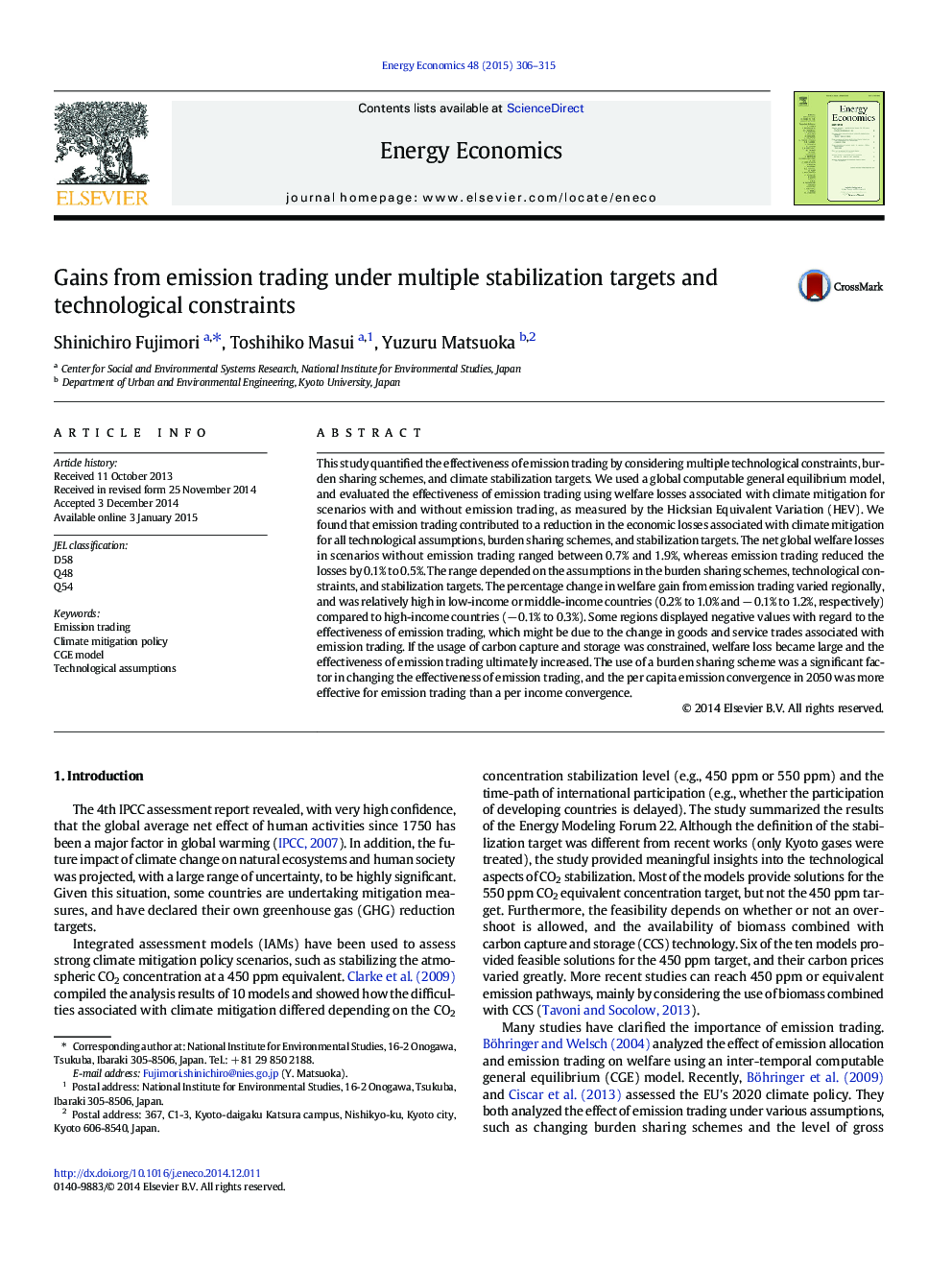| کد مقاله | کد نشریه | سال انتشار | مقاله انگلیسی | نسخه تمام متن |
|---|---|---|---|---|
| 5064390 | 1476715 | 2015 | 10 صفحه PDF | دانلود رایگان |
- The effectiveness of emission trading was assessed.
- Multi burden sharing schemes and technological conditions were used.
- The benefit of emission trading was estimated to be 0.1% to 0.5% of global HEV.
This study quantified the effectiveness of emission trading by considering multiple technological constraints, burden sharing schemes, and climate stabilization targets. We used a global computable general equilibrium model, and evaluated the effectiveness of emission trading using welfare losses associated with climate mitigation for scenarios with and without emission trading, as measured by the Hicksian Equivalent Variation (HEV). We found that emission trading contributed to a reduction in the economic losses associated with climate mitigation for all technological assumptions, burden sharing schemes, and stabilization targets. The net global welfare losses in scenarios without emission trading ranged between 0.7% and 1.9%, whereas emission trading reduced the losses by 0.1% to 0.5%. The range depended on the assumptions in the burden sharing schemes, technological constraints, and stabilization targets. The percentage change in welfare gain from emission trading varied regionally, and was relatively high in low-income or middle-income countries (0.2% to 1.0% and â 0.1% to 1.2%, respectively) compared to high-income countries (â 0.1% to 0.3%). Some regions displayed negative values with regard to the effectiveness of emission trading, which might be due to the change in goods and service trades associated with emission trading. If the usage of carbon capture and storage was constrained, welfare loss became large and the effectiveness of emission trading ultimately increased. The use of a burden sharing scheme was a significant factor in changing the effectiveness of emission trading, and the per capita emission convergence in 2050 was more effective for emission trading than a per income convergence.
Journal: Energy Economics - Volume 48, March 2015, Pages 306-315
